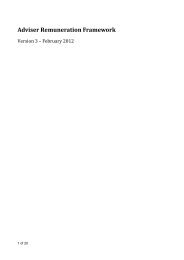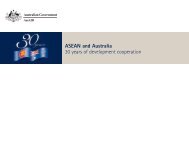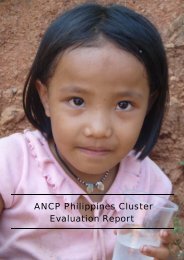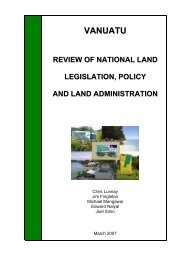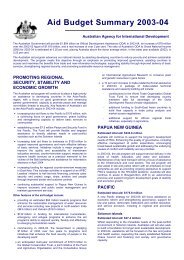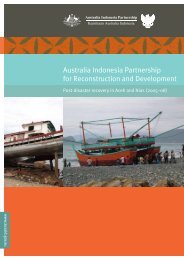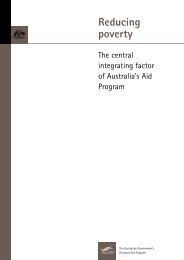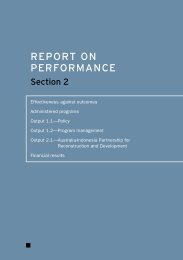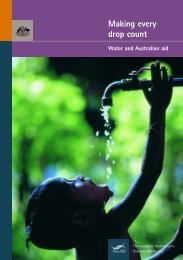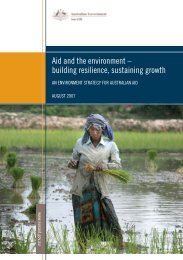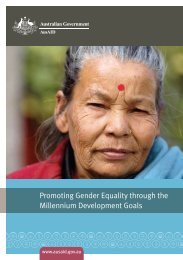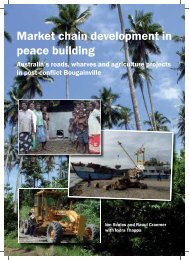Australian Aid to PNG - AusAID
Australian Aid to PNG - AusAID
Australian Aid to PNG - AusAID
Create successful ePaper yourself
Turn your PDF publications into a flip-book with our unique Google optimized e-Paper software.
Of course this argument is open <strong>to</strong> debate. It says nothing about the level ofthe return or how much money was poorly used. It is possible for example thatthe same benefits could have been achieved at an even lower level ofexpenditure. It is also possible that the benefits would have occurred evenwithout public programs. There appear <strong>to</strong> have been rapid gains in Papua NewGuinea in a relatively short period (the infant mortality rate in the highlands inthe 1930s was reported as 1 in 4, and is now around 1 in 10), and there mayhave been sufficient momentum from an exposure <strong>to</strong> better living practices(eg, with respect <strong>to</strong> the feeding of infants, sanitation or prevention of disease)<strong>to</strong> have assured an improvement in living standards over time.This report tentatively draws the conclusion that public programs have made animportant contribution <strong>to</strong> the improvement in living standards sinceindependence. The examination of assistance programs provided in othersections of this report provides some confidence that sensible public programshave been operating. But perhaps more importantly it is difficult <strong>to</strong> beconvinced that such large improvements in living standards as have been seencould have been achieved without improved public programs, given that realper capita incomes and government consumption have been stable or fallen ona per capita basis. For example, it is difficult <strong>to</strong> see why higher schoolparticipation rates would have been sustained without recognition by parentsthat the education system was of value. It seems reasonable <strong>to</strong> conclude thatthere must have been sufficient teachers, classrooms, appropriate teachingtraining, etc, <strong>to</strong> provide a worthwhile service and keep children away fromalternative activities (eg, helping in the home or food garden).In reaching the conclusion that public programs have lifted living standardsover the 25 years since independence, it is important <strong>to</strong> recognise thatcandidates for sharing the credit for the gains include the communitiesthemselves, the NGO movement and in particular the churches, the governmentand donors. While it appears reasonable <strong>to</strong> conclude that public programs havemade an important contribution, it is harder <strong>to</strong> establish from this aggregateanalysis which group has generated the returns.This is not <strong>to</strong> suggest that all public programs are appropriate and operatingefficiently. The argument that public programs have made an importantcontribution is consistent with a recognition of low standards and a potentialfor considerable improvement. The argument simply is that enough was done <strong>to</strong>help lift living standards and that changes have been positive.20 The Contribution of <strong>Australian</strong> <strong>Aid</strong> <strong>to</strong> Papua New Guinea’s Development 1975–2000



